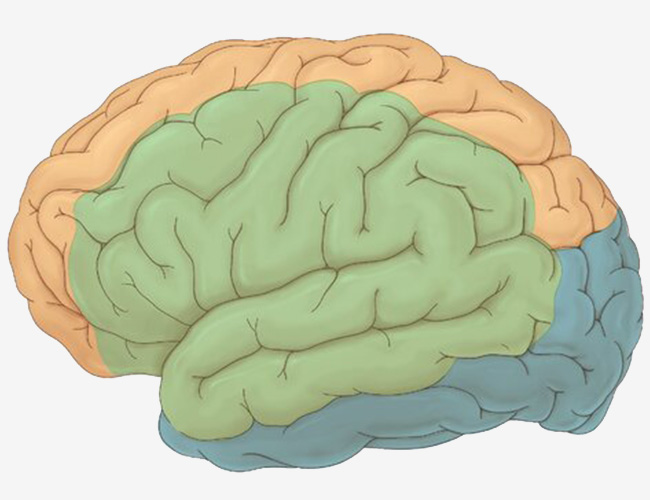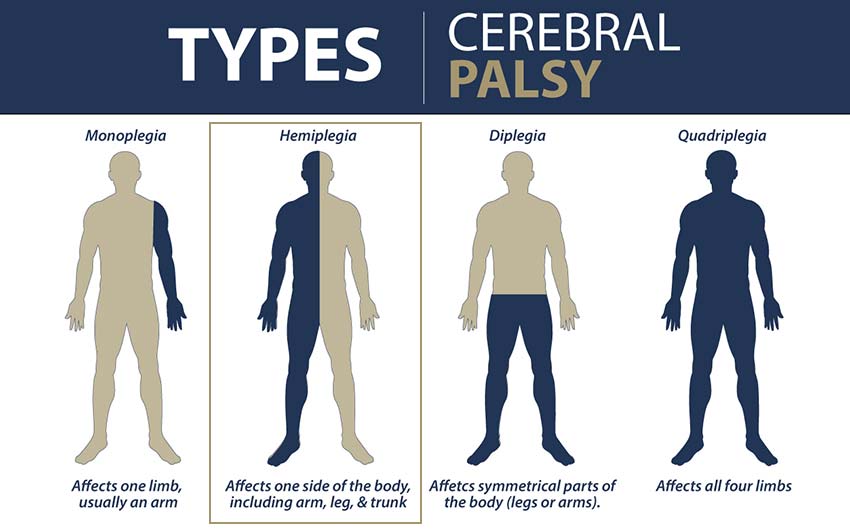Head Injuries During Childbirth
Injuries to the baby’s head during labor and delivery can be very dangerous and even fatal in some cases. These birth injuries only become more tragic for families when they come as a result of a trusted medical professional’s negligence.

Free Legal Consultation
Birth Injury Lawyers
1-888-987-0005Our dedicated Birth Injury Lawyers are available to meet you in your home or the hospital.
Head injuries, including brain injuries and skull injuries, can significantly alter a baby’s life trajectory. Injuries like hypoxic-ischemic encephalopathy can permanently affect the child’s motor control, delay cognitive functioning and other developmental milestones, and cause complications like seizures and vision impairments<.a>. Brain damage at birth is also the leading cause of cerebral palsy.
Over the past three decades, the nationally recognized team of birth injury lawyers, registered nurses, and nurse-attorneys at Miller Weisbrod Olesky have established a proven track record of delivering justice for children and families across the United States who have suffered from all types of head injuries, including brain injuries like HIE.
We are prepared to meticulously investigate the circumstances of your case, gather crucial medical records, consult with top medical experts, and fight tirelessly to secure the compensation you deserve for your child's injury.
We represent families and their birth-injured children throughout the United States. You can contact us today to schedule your free legal consultation by calling our toll-free line at 888-987-0005 or by filling out our online request form. We work on a contingency fee basis, meaning you won't pay any legal fees unless we win your case. We only receive payment once you do.
What Causes Head Injuries During Birth?
Injuries to the baby’s head and brain can step from a variety of internal and external factors. The top causes for head injuries include:
- Birth Trauma: A baby suffers from birth trauma when they sustain any physical injury to their body during the birthing process. When OB-GYNs or other medical professionals use excessive force during delivery, they increase the baby’s risk for head injuries and other injuries as well.
- Birth Asphyxia: Prolonged hypoxia during delivery can result in birth asphyxia, or extreme oxygen deprivation to the brain. This causes nerve and brain cells to die off, leaving permanent damage to the brain and resulting in lifelong injuries like HIE and cerebral palsy.
- Misuse of Forceps & Vacuum Extractors: Forceps and vacuum extractors are two types of birth-assistive devices that can help ease a baby out through their mother’s birth canal. When excessive force is used, these tools can cause lesions, scrapes, and fractures to the baby’s head, even risking injury to their brain.

Forceful Contractions: When a mother experiences frequent or abnormally forceful contractions from uterine hyperstimulation or tachysystole, it can deprive the baby of oxygen in the womb and place excessive force upon their head and brain. Additionally, a prolonged or arrested labor can have the same effects on a child and is equally dangerous for the same reasons.
Healthcare providers must be aware of these risks and be prepared to address them during labor and delivery. If necessary, they must be ready to artificially inducing labor by using medications like Pitocin and Cytotec or be equipped to perform an emergency C-section delivery.
What Are Common Head Injuries at Birth?
Brain Injuries
Brain injuries are among the most serious types of head injuries because of the brain’s role in controlling and directing the rest of the body’s activities and processes. They occur most commonly from one of two scenarios: oxygen deprivation and birth trauma to the head.

Hypoxic-ischemic encephalopathy (HIE) is the most common and severe birth-related brain injury caused by oxygen deprivation. HIE occurs when a baby suffers from birth asphyxia, which causes their heart rate to drop and display signs of fetal distress. Blood flow to the baby’s brain is reduced (ischemia), meaning the baby isn’t receiving enough oxygenated blood to survive.

Another type of brain injury that can be caused by oxygen deprivation is periventricular leukomalacia (PVL), an injury to the areas near or around the brain’s ventricles that contain cerebrospinal fluid.
PVL affects parts of the brain known as “white matter,” which is responsible for transmitting messages between nerve cells and the spinal cord. A PVL injury will mirror similar symptoms of other brain injuries and can also be a risk factor for cerebral palsy.

Brain injuries caused by birth trauma can include skull fractures and intracranial hemorrhages. These types of injuries may require different treatment approaches, but they can also threaten the child’s long-term wellbeing with risks for seizures, delayed developmental milestones, and loss of motor control.
Doctors, nurses, and all other medical professionals must thoroughly assess a child during delivery and at birth for brain injuries, including assigning an APGAR score. If they suspect brain damage has occurred, they must promptly begin treatment like brain cooling and admit the baby into the neonatal intensive care unit (NICU).

Learn More About
Brain Injuries at Birth
Skull Fractures
Skull fractures can be caused by trauma experienced during a difficult delivery or by the misuse of tools like forceps and vacuum extractors.
Minor skull fractures can heal on their own, but depressed skull fractures run the risk of puncturing brain tissue and causing life-threatening complications like brain bleeds or cephalohematoma. In these instances, surgery may be necessary to avoid brain damage.

Untreated skull fractures can be dangerous and have lifelong consequences for the child, including seizure disorders and cognitive developmental delays.
Learn More About
Fractures at Birth
Cerebral Compression & Head Molding
Cerebral compression is a type of injury that can happen when the baby's head is subjected to excessive pressure during labor and delivery. During labor, this pressure is often related to the mother's uterine muscles engaging in a pattern of contraction and relaxation that help push the baby through the birth canal.
As the baby passes through the birth canal, a certain amount of cerebral compression is normal. However, when there is excessive pressure on a newborn's head, it may result in irreparable brain damage from decreased blood and oxygen supply (hypoxia) in the brain.
The bones of a newborn baby's skull are soft and flexible, with gaps between the bony plates called cranial sutures. Two particularly large gaps are the front and back fontanelles (The space between the five major bones in a newborn baby's skull that have not yet fused together) where the corners of three or four developing are more flexible than in the skull of an adult because they need to shift around to accommodate passage through the birth canal.

When a baby is born in a head-first position, excessive pressure from uterine contractions that are too strong or frequent may cause the head to mold into an oblong shape. Head molding is the term used to describe this abnormal head shape.
It is the responsibility of physicians, OB-GYNs, and other medical professionals to ensure labor and delivery is a safe process and that the baby does not suffer any neurological injuries from cerebral compression.
Doctors are extensively trained to reduce the risk of infant injury during birth by detecting, carefully monitoring, and diagnosing any potential complications or abnormalities that may arise during childbirth.
Learn More About
Cerebral Compression
Intracranial Hemorrhage
A neonatal intracranial hemorrhage (ICH) or brain bleed is a birth injury that may occur during childbirth, resulting in bleeding inside the baby’s brain. In this birth complication, the tearing of blood vessels within the baby’s brain causes the blood to spread to other parts of the brain tissue.

Babies who have suffered hypoxic-ischemic encephalopathy (HIE) around the time of birth are likely to have intracranial hemorrhages. This puts the baby at an increased risk of cerebral palsy. Long-term complications may include hemiplegia (paralysis in one side of the body), ataxia (loss of muscle control), developmental delays, and cerebral palsy.

The medical provider should be alert to the presence of risk factors for neonatal intracranial hemorrhage. Preparations should be made ahead of time for an emergency cesarean section to minimize the risk of hemorrhaging and other birth injuries.
When a serious intracranial hemorrhage (grade 3 or grade 4) is suspected, the baby should be immediately moved to the NICU. Most neonatal intracranial hemorrhages are non-progressive, but may result in permanent physical and mental impairments, including cerebral palsy. Long-term physical, occupational, and speech therapies as well as the use of assistive devices may be necessary to help the child adapt to lifelong disabilities.
Learn More About
Intracranial Hemorrhage
Cephalohematoma
Cephalohematoma is a birth complication involving buildup of blood from broken or damaged vessels (hemorrhage) that may occur between the baby’s skull and outer layer of skin during the birth process.

The most common site of cephalohematoma is the parietal bone area (bone forming a part of the top and side of the head.) With that said, this condition can develop over any of the cranial bones. No specific diagnostic tests are available, but medical providers can confirm a diagnosis based on the characteristic bulge appearing on the baby’s head.
In some cases, additional neuroimaging tests, such as x-rays, ultrasound, and CT scans may be ordered to evaluate for potential skull fractures or any other complications underneath the skull, which could affect the baby’s brain.

Newborn cephalohematoma usually resolves without requiring any significant medical intervention. But in any case, close monitoring is always required to make sure the condition doesn’t worsen.
In some instances, the medical provider may try to aspirate/drain the blood from the injury site, but this treatment approach is generally not recommended. Drainage along with antibiotic medication treatment may be necessary if an abscess or infection has occurred in the affected area. Management of infection in babies with cephalohematoma is critically important because there is a risk of the brain becoming infected with meningitis, which is a medical emergency.
Learn More About
Cephalohematoma
Caput Succedaneum
Caput succedaneum is a neonatal birth complication involving localized swelling or edema that may be present on the newborn’s head after a vaginal delivery. The edema (swelling due to excess fluid trapped under the baby’s scalp) is usually benign resulting from the compression and pressure on the baby’s he ad as they pass through the birth canal.
A key symptom of caput succedaneum is a soft, puffy, and swollen spot (typically 1-2 cm deep) primarily on the part of the head which first went through the birth canal.

The condition is sometimes caused by a premature rupture of membranes (PROM). When the amniotic sac is unable to support the head of the fetus due to rupture of membranes, it will cause more pressure on the head from the pelvic bones and fluid build-up may occur under the baby’s scalp.
Most caput succedaneum cases will self-resolve within 48 hours. Attempting to drain the fluid from the baby’s scalp can cause infections, so it should be avoided. All babies diagnosed with caput succedaneum should be monitored for the risk of newborn jaundice. Bruising of the skin over the swollen area may lead to increased bilirubin levels in the blood, which may cause neonatal jaundice or make it worse.
In addition to this, caput succedaneum is also a key indicator to show that the baby when through a stressful and difficult delivery and that their head was subjected to considerable external pressure at the time of birth. This should alert the medical provider to the possibility of a more serious brain injury, such as hypoxic-ischemic encephalopathy (HIE) resulting from oxygen deprivation, which can lead to cerebral palsy.
Learn More About
Caput Succedaneum
Hydrocephalus
Hydrocephalus, or "water on the brain," is a medical condition that occurs when there is an excessive buildup of Cerebrospinal Fluid (CSF) in the brain. Although this fluid is a normal and necessary part of the brain's functioning, if there is a blockage flow, a lack of absorption, or overproduction of this fluid, it can lead to increased pressure on a baby's brain, expand their skull bones, and cause brain damage of varying severity.

While each baby may experience hydrocephalus symptoms differently, here are some of the most common signs and symptoms include:
- An unusually large head or bulging fontanelles (soft spot between the bones)
- Bulging eyes and an inability to look up when facing forward
- Fixed downward gaze
- Poor appetite
- Seizures
- Fussiness and excessive irritability
- Swollen scalp veins
With prompt diagnosis and treatment, mild cases of hydrocephalus can have little to no lasting effects. However, in other more severe cases, untreated hydrocephalus can result in lifelong brain injury or even be fatal.
The goal of hydrocephalus treatment is to reduce pressure on the brain by draining the excess buildup of cerebral spinal fluid. Occasionally, medications may be prescribed to draw off the extra CSF.
If a doctor does not begin treatment promptly and compression on the brain lasts too long, the increased pressure can cause damage. Treatment for hydrocephalus will depend on the child's symptoms, age, general health, the cause of the hydrocephalus, and how severe their condition is.
What Medical Mistakes Cause Head Injuries at Birth?

Throughout a mother’s pregnancy, during labor and delivery, and shortly after birth, there are many opportunities for OB-GYNs and other medical professionals to make mistakes. When these mistakes cause a preventable birth injury to the baby’s head, it can be grounds for a medical malpractice lawsuit. Examples of negligence that can cause or worsen a child’s head injuries include:
- Using excessive force with forceps and vacuum extractors during an assisted vaginal delivery.
- Failing to recognize the signs of fetal distress, leading to birth asphyxia and a brain injury like HIE.
- Delaying a diagnosis of a cerebral compression injury, including cephalohematoma, caput succedaneum, or hydrocephalus.
- Improper administration of labor-inducing medications, leading to uterine hyperstimulation.
- Delaying an emergency C-section delivery past the point of safety, resulting in birth asphyxia or another labor and delivery complication.
- A missed diagnosis of any pregnancy complications that are risk factors for head injuries, including fetal macrosomia and cephalopelvic disproportion.
- Failing to administer birth injury treatment after delivery, including neonatal resuscitation or therapeutic hypothermia (brain cooling).
- Any other medical mistake or form of negligence that unknowingly causes a traumatic birth injury to the baby’s head.
It’s important to note that it requires a detailed review of the specific facts and timeline of a mother’s birth and the action taken shortly after before making a definitive judgement as to whether medical malpractice played a factor in the child’s head injury.
Was My Child’s Head Injury Preventable?
Head and brain injuries at birth can be preventable in most cases with proper medical care. Birth injury negligence, such as using excessive force or delaying treatment like an emergency C-section, can cause an irreparable injury to your child that could have been avoided.

If a family believes medical negligence caused or worsened their child’s head injuries, legal support may be an option. A knowledgeable birth injury attorney can review the medical records and circumstances to assess whether a claim exists.
Parents whose children suffer from the long term effects of birth injuries deserve to know whether it could have been prevented. Our dedicated birth injury lawyers want to help you find those answers and obtain the funds necessary to improve your child’s quality of life.
If your child has been diagnosed with a head injury or is suffering from a related birth complication, and you believe that it was caused in part by medical errors, our firm will thoroughly investigate the facts and hold the responsible medical providers accountable by pursuing medical malpractice claims against them.
Sometimes families are hesitant to reach out to a birth injury malpractice attorney or law firm. They may feel overwhelmed by their circumstances or are worried that a law firm will not be able to help them.
But the only way to find out if you have a case is to talk to an attorney who understands how birth injuries can lead to developmental delays and other complications that require long-lasting medical support and treatment.
What is the Statute of Limitations in a Birth Injury Lawsuit?

A statute of limitations (SOL) is a law that sets a time limit on how long an injured person has to file a lawsuit after an accident. It is essential to understand that statutes of limitations vary based on the type of case and the state where it is filed. For instance, the deadline for birth injury claims is typically different from other claims, such as injury to personal property, fraud, contract disputes, and collection of debts.
Generally, the clock starts ticking on the date the injury occurred. However, there are exceptions to this rule, and in some cases, the statute of limitations starts when a person discovers or reasonably should have discovered an injury. When dealing with government agencies, SOLs can become even more complex.
For example, if the party that injured you was:
- A federal employee
- Employed by a military hospital, Veterans Administration facility, or a federally funded medical entity
You may need to file a birth injury claim under the Federal Tort Claims Act (FTCA). In FTCA cases, claimants must go through certain administrative procedures before filing a lawsuit. In some states, if the negligent party was a local or state government hospital or the doctors and medical providers are employees of a governmental entity, the time period in which you must give "notice" may be shorter.
If your case is filed outside of the statute of limitations, it will typically be dismissed, and you will not be eligible to recover compensation for your injuries. Determining when a statute of limitations begins on your case can be tricky. If you're considering pursuing compensation for a birth injury, contacting an attorney as soon as possible is in your best interest.
How Can the Birth Injury Attorneys at Miller Weisbrod Olesky Help?

A child’s head injuries can be prevented in many cases, but it takes a detailed expert review of the facts and circumstances of your pregnancy and your child's birth to determine whether the injury was the result of medical malpractice.
Our Process
At Miller Weisbrod Olesky, a team of specialized birth injury attorneys, nurses and paraprofessionals uses our detailed medical negligence case review process to assess your potential birth injury case. We start by learning more about you and your child and the status of meeting/missing developmental milestones. Then we gather medical records to determine what happened before, during, and after your delivery. We call in skilled medical experts who review your records and let us know if they think medical errors could have caused you or your child's injuries.
If we feel medical negligence caused or contributed to the child’s head or brain injury, we meet with you to discuss how you can receive compensation from the medical professionals who made the errors.
At no point in our legal intake process will we ask you to pay anything. The medical review of your case and the consultation are free. We only receive payment when you do. The sooner you reach out to us, the sooner we can begin investigating your case and gathering the evidence needed to support your claim.
We work on a contingency fee basis, meaning you won't pay any legal fees unless we win your case. Contact us today to schedule your free legal consultation by calling our toll-free line at 888-987-0005 or by filling out our online request form.
